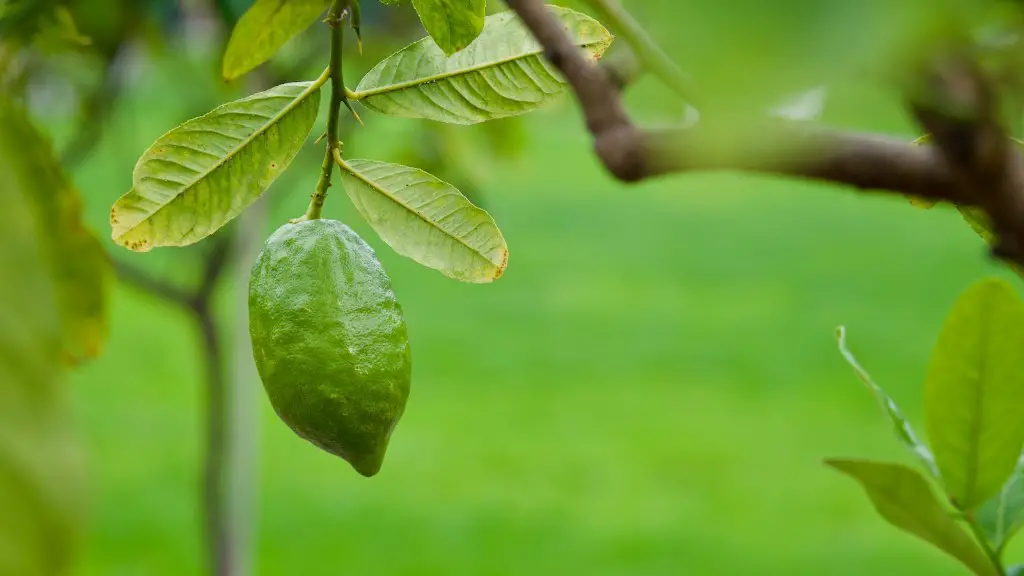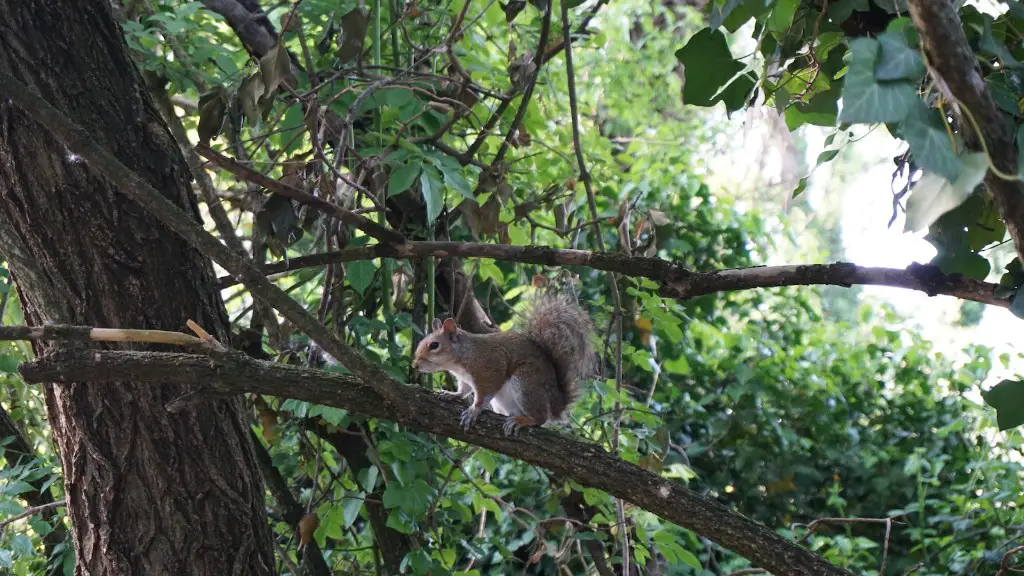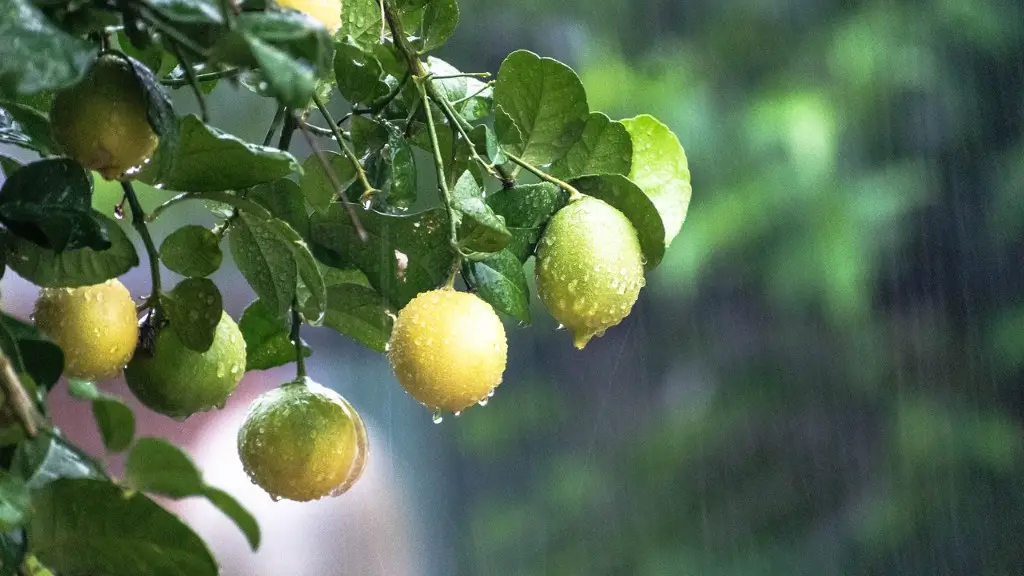Causes of Black Avocado Tree Stems
Avocado trees are known for their lush, green foliage and delicious fruit, but sometimes an unexpected black coloring can appear on the stems and branches. This is a sign of an underlying issue and should be addressed quickly in order to prevent further damage.
A range of causes could be behind the black stem tendency, with some being more serious than others. Common culprits include sunburn, fungal or bacterial infections, or mechanical damage. Additionally, if temperatures regularly dip lower than the trees prefer (usually below 45 degrees Fahrenheit) then the bark can blacken to protect the trunk from the cold air.
The size of the affected area can depend on the particular cause and severity. For example, sun-scorching is common in bright sunlight, however an infection may lead to larger patches of darkening.
It is important to confirm the cause of the black stem prior to attempting any corrections. Specialists have advised that examining the specific circumstances of the individual tree – for example, the surrounding environment – can give clues to the underlying cause. In some cases however, a professional may need to diagnose the issue further.
The best way to deal with the problem depends on the exact cause. For example, if the trunk is indeed experiencing sunburn then pruning and protecting from further injury with tree wraps will help to avoid further damage. If the problem is caused by disease, then a fungicide or bactericide might be needed.
Additionally, restoring the lost nutrients with soluble fertilizer can help to accelerate the natural healing process. However, this option should only be chosen in case of an infection, and not if the blackening is due to cold or other environmental stresses.
It is important to keep an eye on the tree, as any issues should be addressed quickly. Generally speaking, the quicker the action is taken, the lower the chance of long-term damage or impairment to the tree.
Preventing Black Avocado Tree Stems
The best way to protect an avocado from black stem is proper maintenance, as keeping the tree healthy can maximise its resilience and reduce the risk of further problems.
The key to avoiding a black stem is regular watering and ensuring that the tree has all the necessary nutrients. Generally speaking, the soil should be loose and kept damp but not drowned. Using a fertilizer – specifically one rich in calcium – can also help to keep the tree healthy.
When it comes to sun and shade, avocado trees need to be planted in an area that receives plenty of sunlight, however if temperatures exceed 85F, the sun should be filtered to allow the tree to rest. It is also important to ensure the leaves don’t get burnt by the sunlight, as this can cause sunburn.
Additionally, avocado trees are sensitive to certain pests, so it is important to keep an eye out for any potential infestations. If any signs of an infestation are found, then taking steps to treat them quickly is essential in order to prevent further damage.
In any case, regularly pruning dead branches in order to ensure good airflow within the tree can help to protect the avocado tree from potential stressors.
Pros and Cons of Avocado Trees
Avocado trees are popular for their sweet fruits and health benefits, yet they are not without their drawbacks.
The main advantages of Avocado trees include the fact that they are relatively low maintenance, as they don’t need to be pruned as often as other trees. Additionally, ower maintenance costs can be a bonus for homeowners as well. Avocado trees also produce delicious fruits, that have a range of health benefits.
Despite the benefits, there are some drawbacks to consider before planting an Avocado tree. In certain climates, the high temperatures can cause serious damage to the tree, including black stem. Furthermore, the fruit of the tree can take up to three years to be ready to eat.
Ultimately, the decision of whether to plant an Avocado tree is down to the gardener’s individual circumstances. It is important to weigh up the pros and cons in order to find the best option for the specific environment.
Costs and Benefits of Professional Diagnosis
When dealing with an avocado tree suffering from black stems, seeking advice from a professional can be a wise idea. Specialists can provide an in-depth diagnosis on the potential causes of the problem, as well as give advice on potential solutions.
Depending on the size of the tree and severity of the case, professional diagnosis can involve physical inspection and sample analysis, alongside advice and reading materials. This can help the gardener to understand the exact cause of the black stem and act decisively.
It is important to consider the cost of these services and weigh up the potential benefits. Depending on the individual case, pursuing a professional diagnosis could be the most cost-effective way of treating the problem, as gardeners can save time and avoid investing in treatments that may not be suitable.
Sometimes, assessing the situation without professional help can be possible. Examining the tree closely for signs of mechanical damage or sun burn can give clues to the cause of the black stem. Additionally, trying methods such as pruning and fertilising can aid in relief from the issue.
Inclement Weather and Avocado Trees
Another potential stressor that can lead to black stem formation is inclement weather, as cold temperatures can damage the bark of the tree.
Specialist advise that ensuring that the avocado tree is receiving enough sunshine and warmth is essential in order to prevent any issues related to weather and frost. This means that planting the tree in a sheltered area is beneficial, as the tree can find the balance between sun warmth and protection from the cold.
Additionally, shielding the tree with protective covers when temperatures drop below 45 degrees Fahrenheit can help to protect the tree from further damage. Taking steps to ensure that the temperature doesn’t dip too low, such as wrapping the trunk in burlap, can be beneficial.
Adopting preventative measures and checking the tree for signs of frost damage can help to address the issue before it becomes a problem. Generally speaking, the earlier any problems are dealt with, the lower the chance of long term damage or impairment to the tree.
Soil Control and Avocado Trees
It is important to note that controlling the soil can be beneficial in helping to prevent black stem development, as keeping the soil loose and damp can aid the health of the tree.
Specialists advise that maintaining soil levels is essential, specifically avoiding flooding or over-saturating. It is important to be aware of the natural drainage levels and determine the right amount of watering to ensure that the tree has access to the right amount of moisture.
When it comes to nutrients, avocado trees lean towards soil with a pH level of 6 to 8, so it is advised to examine the soil to ensure that the tree is receiving the right amount of nutrients.
In addition, replenishing lost nutrients with soluble fertilizer can help to promote nutrient uptake, however this should only be done if the tree is not suffering from cold as this can worsen the situation. Taking the time to confirm the individual circumstances of the tree prior to attempting any corrections is important.
Pests and Avocado Trees
It is important to be aware of potential pests that can damage an avocado tree, as these can cause disfigurement and even stem blackening.
Carefully examining the tree for disease or infection can be beneficial in protecting the tree from further damage. Additionally, some pests may leave droppings or other signs of infestation, that can be inspected for any potential problems.
In case of an infestation, taking steps to remove the pests quickly can help to prevent further damage to the tree. Generally speaking, the sooner the problem is addressed, the lower the chance of long term damage.
It is important to note that pesticides should only be used if necessary, as this can be harmful to beneficial insects such as bees or ladybugs. Additionally, it is essential to adhere to safety and regulations for pesticides in the country.
Conclusion
In conclusion, blackstem development on avocado trees is an issue that should be addressed quickly in order to avoid long term damage. It is important to confirm the cause of the black stem prior to attempting any corrections, as the best way to deal with the problem depends on the exact underlying cause. Additionally, regular maintenance of the tree and monitoring for potential pests can help to avoid further damage.



